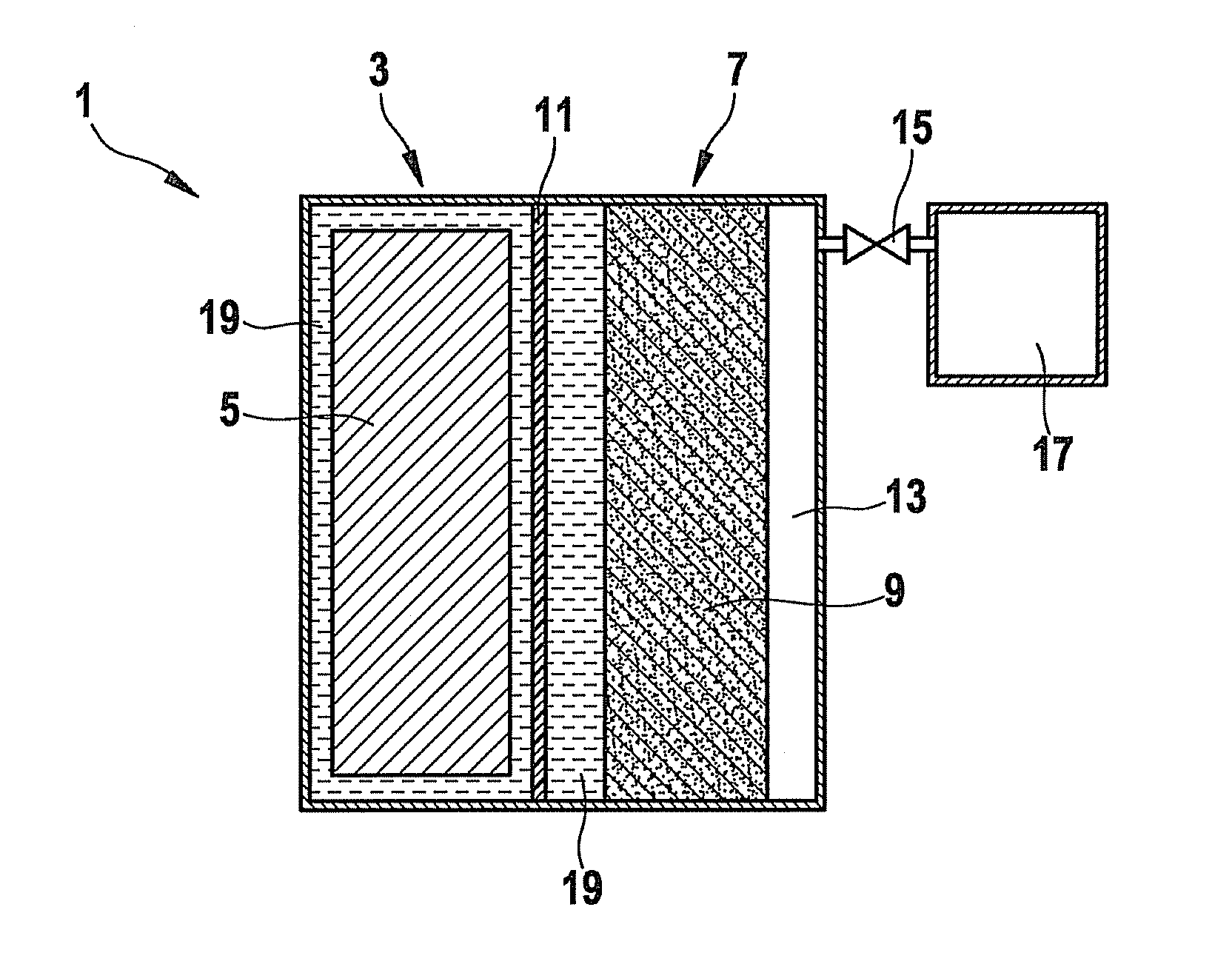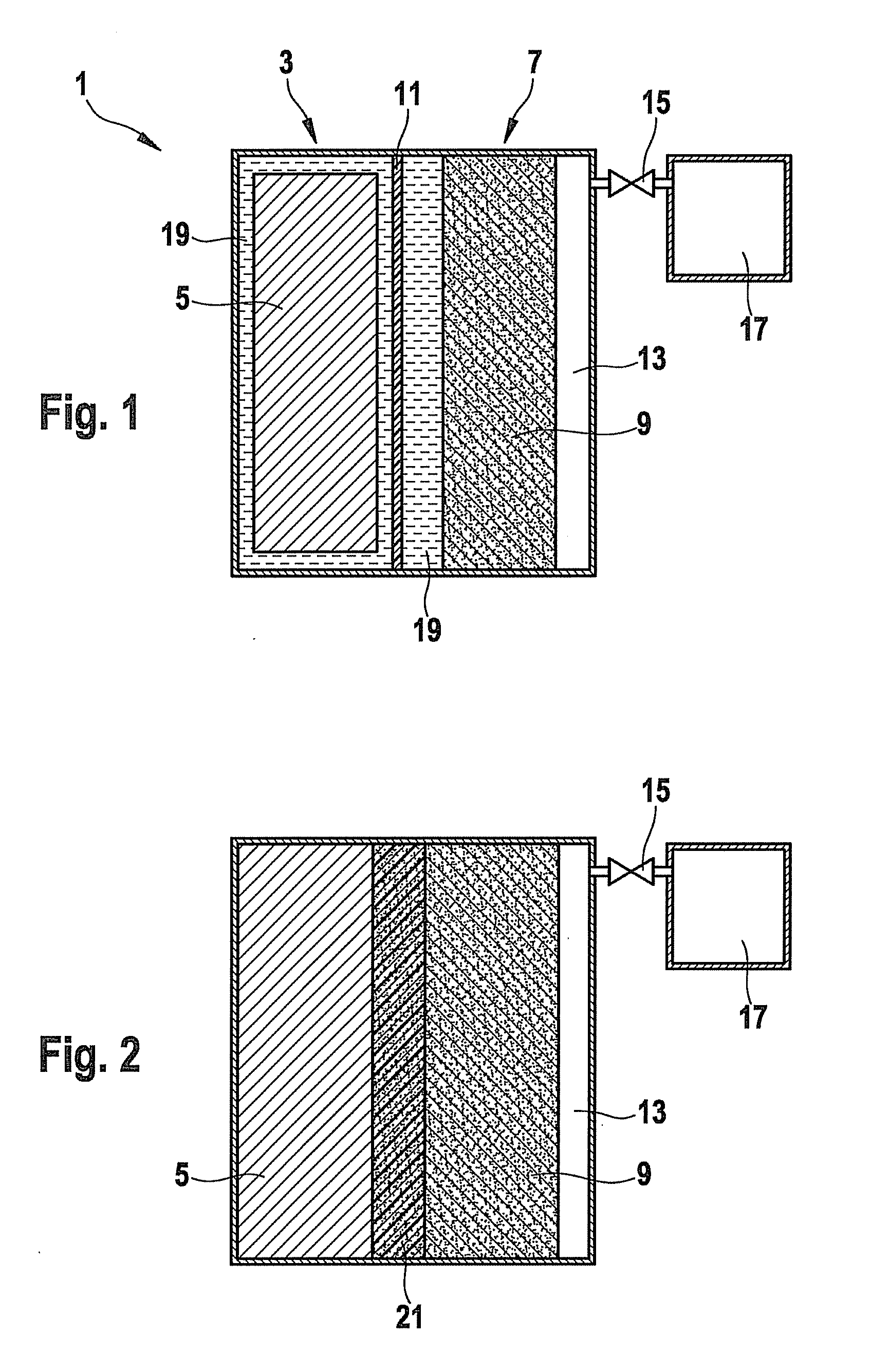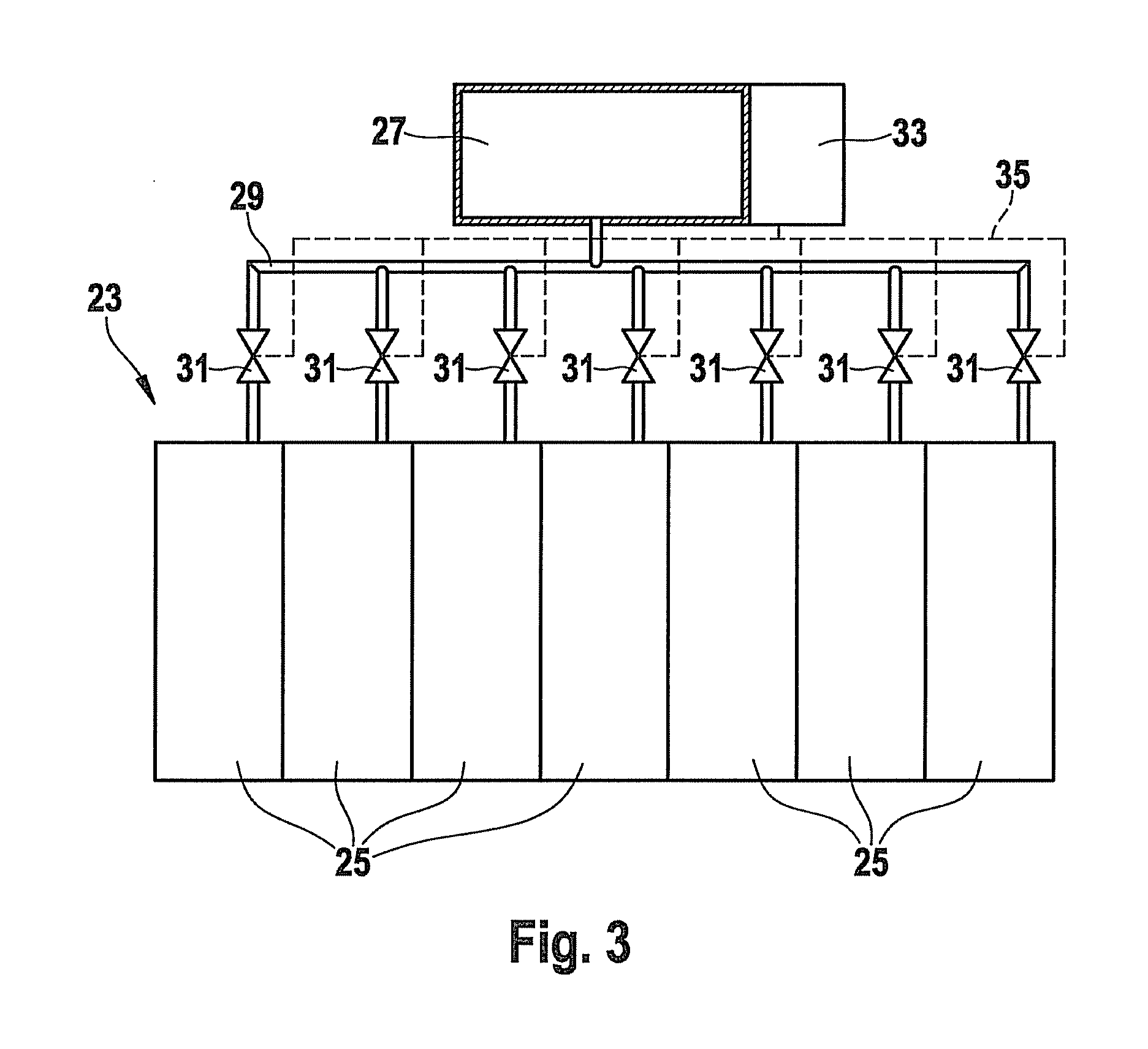Electrochemical energy store
a technology of electrochemical energy and storage battery, which is applied in the direction of non-aqueous electrolyte cells, cell components, sustainable manufacturing/processing, etc., can solve the problems of reducing power output and service life, unusable lithium anodes, and insufficient energy density of lithium ion storage batteries used today, and achieves the effect of greater energy density
- Summary
- Abstract
- Description
- Claims
- Application Information
AI Technical Summary
Benefits of technology
Problems solved by technology
Method used
Image
Examples
Embodiment Construction
[0026]FIG. 1 shows a schematic representation of an electrochemical energy store, according to the present invention, having a liquid electrolyte.
[0027]An electrochemical energy store 1 includes a first chamber 3, in which an anode 5 is included. Anode 5 is an anode, in this instance, that is customary for lithium ion storage batteries, for example. A suitable anode 5 includes an intercalation connection based on graphite, a tin-containing and / or silicon-containing alloy or metallic lithium.
[0028]Electrochemical energy store 1 further includes a second chamber 7 in which a cathode 9 is accommodated. In order to provide a sufficiently large reaction space for the reaction of lithium with oxygen to form lithium peroxide, cathode 9 is preferably porous. A suitable cathode includes, for instance, a lattice structure which has a carrier material as reaction surface. For its production, a carrier material is applied, for example, as the reaction surface for the cathode reaction, to a meta...
PUM
| Property | Measurement | Unit |
|---|---|---|
| electrochemical energy | aaaaa | aaaaa |
| lattice structure | aaaaa | aaaaa |
| electrochemical | aaaaa | aaaaa |
Abstract
Description
Claims
Application Information
 Login to View More
Login to View More - R&D
- Intellectual Property
- Life Sciences
- Materials
- Tech Scout
- Unparalleled Data Quality
- Higher Quality Content
- 60% Fewer Hallucinations
Browse by: Latest US Patents, China's latest patents, Technical Efficacy Thesaurus, Application Domain, Technology Topic, Popular Technical Reports.
© 2025 PatSnap. All rights reserved.Legal|Privacy policy|Modern Slavery Act Transparency Statement|Sitemap|About US| Contact US: help@patsnap.com



